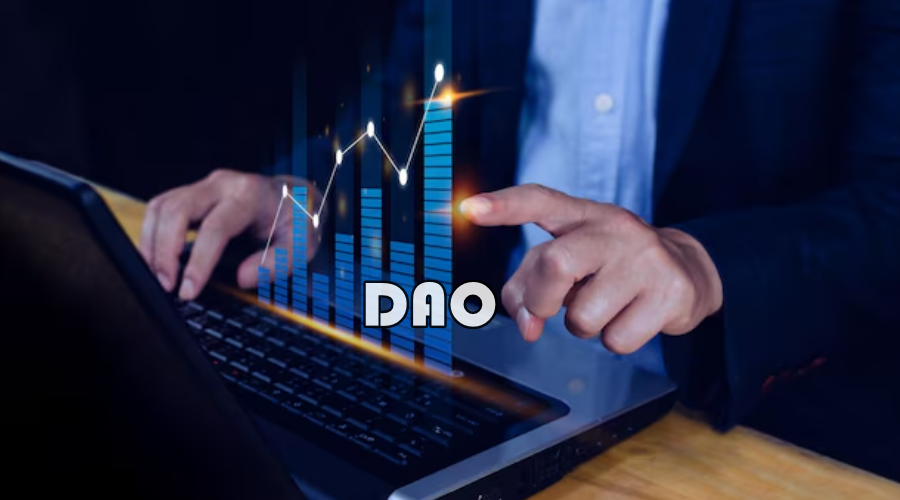Decentralized Autonomous Organizations (DAOs) are a groundbreaking development in the world of blockchain and digital governance. They represent a shift from traditional centralized organizational structures to a more democratic, transparent, and autonomous model. To enable a decentralized management system where stakeholders collectively make decisions rather than a centralized authority, DAOs use smart contracts and blockchain technology. This article explores how DAOs are run, their underlying principles, and the potential they hold for the future.
Understanding DAOs
A DAO is an organization governed by smart contracts—self-executing contracts with the terms of the agreement directly written into code. These smart contracts operate on a blockchain, which ensures transparency, security, and immutability. The key characteristic of a DAO is its decentralized nature, meaning no single entity has control over the organization. Instead, the community of stakeholders makes decisions through a voting process.
The Structure of DAOs
The structure of a DAO is fundamentally different from that of traditional organizations. Here are the key components:
1. Smart Contracts
Smart contracts form the backbone of a DAO. They define the rules of the organization and execute agreed-upon decisions automatically. Once deployed on the blockchain, these contracts cannot be altered without consensus from the stakeholders, ensuring a tamper-proof governance system.
2. Tokens
DAOs typically issue tokens that represent ownership or voting power within the organization. These tokens can be acquired through various means, such as contributions to the project, purchases, or as rewards. Token holders have the right to participate in the decision-making process by voting on proposals.
3. Proposals and Voting
Decisions within a DAO are made through a proposal and voting system. Any member is able to submit a proposal, and the token holders then vote on it. The proposal must meet a predefined threshold of votes to be accepted. This democratic process ensures that all stakeholders have a say in the organization’s operations.
How DAOs Are Run
Running a DAO involves several steps and mechanisms designed to maintain transparency, fairness, and efficiency. Here’s a detailed look at how DAOs operate:
1. Proposal Creation and Submission
The first step in the decision-making process is the creation and submission of a proposal. Proposals can range from minor operational changes to significant strategic decisions. The proposal is typically drafted and submitted on the DAO’s platform, where it is made accessible to all members for review.
2. Discussion and Deliberation
Once a proposal is submitted, it enters a period of discussion and deliberation. This phase is crucial for the community to understand the implications of the proposal and debate its merits and drawbacks. Platforms like Discord, Telegram, or dedicated DAO forums are often used for these discussions.
3. Voting Process
After the discussion phase, the proposal is put to a vote. Voting mechanisms can vary, but common methods include:
- Simple Majority: The proposal passes if more than 50% of the votes are in favor.
- Supermajority: A higher threshold (e.g., 60-70%) is required for the proposal to pass, ensuring broader consensus.
- Quadratic Voting: A voting system that allows individuals to cast multiple votes on a single proposal, with the cost of each additional vote increasing exponentially. This method aims to balance influence between majority and minority stakeholders.
Voting is typically conducted on the blockchain, ensuring transparency and immutability of the results.
4. Implementation
If a proposal is approved, the next step is implementation. Smart contracts automatically execute the approved decisions, reducing the need for intermediaries and minimizing the risk of human error. The transparent nature of blockchain ensures that all actions are recorded and can be audited by any member of the DAO.
5. Continuous Monitoring and Feedback
DAOs operate in a dynamic environment where continuous monitoring and feedback are essential. The community regularly reviews the outcomes of implemented proposals and makes adjustments as necessary. This iterative process allows DAOs to adapt and evolve in response to changing circumstances and stakeholder needs.
Challenges and Solutions
While DAOs offer numerous advantages, they also face several challenges:
1. Scalability
As DAOs grow, the number of proposals and votes can become overwhelming. Solutions include implementing delegated voting, where token holders can delegate their voting power to trusted representatives, and using off-chain voting mechanisms to reduce the load on the blockchain.
2. Security
Smart contracts are prone to errors and flaws that malicious actors can take advantage of. Rigorous code audits, bounty programs for identifying bugs, and employing multi-signature wallets for critical decisions can enhance security.
3. Participation
Ensuring active participation from a diverse group of stakeholders can be challenging. Incentivizing participation through rewards, simplifying the voting process, and fostering a strong community culture can help increase engagement.
4. Legal and Regulatory Issues
The legal status of DAOs varies across jurisdictions, and navigating the regulatory landscape can be complex. Engaging legal experts and advocating for clearer regulations can help DAOs operate within legal boundaries.
The Future of DAOs
The potential of DAOs extends far beyond the realm of blockchain and cryptocurrencies. They have the capacity to revolutionize traditional organizational structures across various industries. Here are a few areas where DAOs could make a significant impact:
1. Finance
DAOs can democratize investment and asset management, enabling decentralized venture capital funds, decentralized exchanges, and autonomous financial institutions where stakeholders have a direct say in governance.
2. Social and Community Projects
DAOs can empower communities to manage and fund social projects, charity initiatives, and local development programs. The transparent and democratic nature of DAOs ensures that resources are allocated effectively and equitably.
3. Creative Industries
Artists, musicians, and content creators can use DAOs to manage intellectual property rights, distribute royalties, and fund new projects. DAOs can provide a more equitable and transparent model for managing creative endeavors.
4. Corporate Governance
Traditional companies can adopt DAO principles to create hybrid models that combine centralized efficiency with decentralized decision-making. This could lead to more transparent, accountable, and democratic corporate governance structures.
Conclusion
Decentralized Autonomous Organizations represent a transformative approach to governance, leveraging blockchain technology to create transparent, democratic, and autonomous organizational structures. By understanding how DAOs are run—through smart contracts, token-based voting, and community-driven decision-making—businesses and communities can explore new ways to collaborate, innovate, and manage resources effectively. Despite the challenges, the potential of DAOs to revolutionize various sectors is immense, making them a compelling model for the future.

